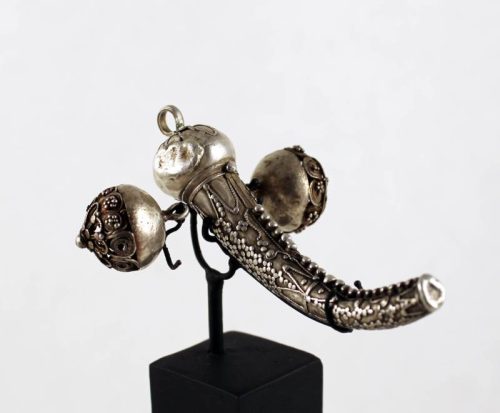A broad war helmet frontlet shaped from hammered brass known as a tap lavong kayo from Kayanic Dayak, eastern Kalimantan, Borneo, Indonesia.
Material: bronze.
From the first half of the 20th century.
The frontlet is folded gently backwards at the midsection to accommodate the curvature of the helmet and features projecting tendrils that flank a highly stylized visage. Scholars posit that these figures represent protective guardian spirits or perhaps spirits of ancestral figures who protect the warriors during each instance of combat.
Provenance: European private collection
Dimensions:
Only the helmet frontlet: 19,5 x 13 cm
Literature:
“Ethnic Jewelry from Indonesia”, Carpenter, Bruce W., Editions Didier Millet, 2011, p. 152 “The jewelry of Southeast Asia”, Richter, Anne, Thames & Hudson, 2000, p. 279, 324 “Parures de tête ethniques d'afrique, d'Asie d'Océanie et d'Amérique”, van Cutsem, Anne, Skira, 2005, p. 211 “The jewelry of Southeast Asia”, Richter, Anne, Thames & Hudson, 2000, p. 222INDO107
























